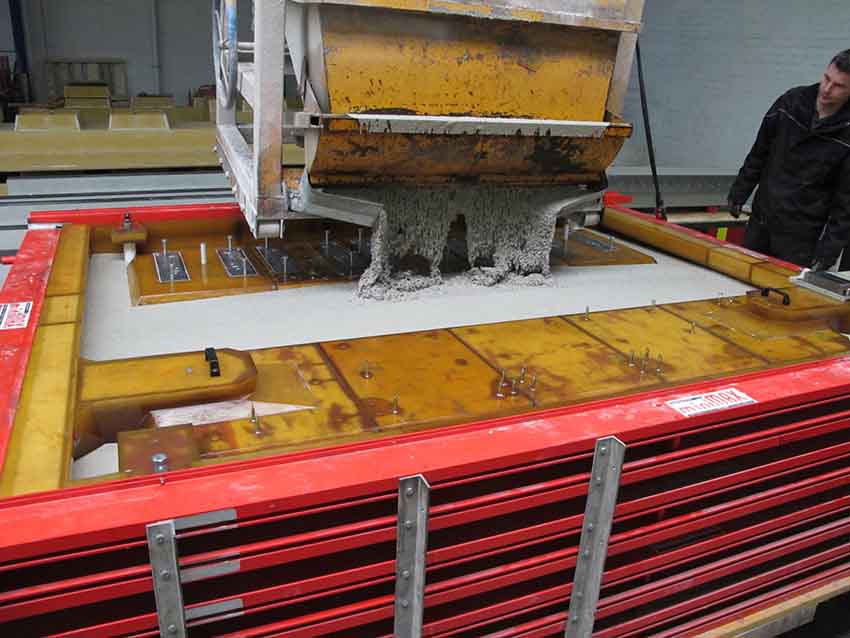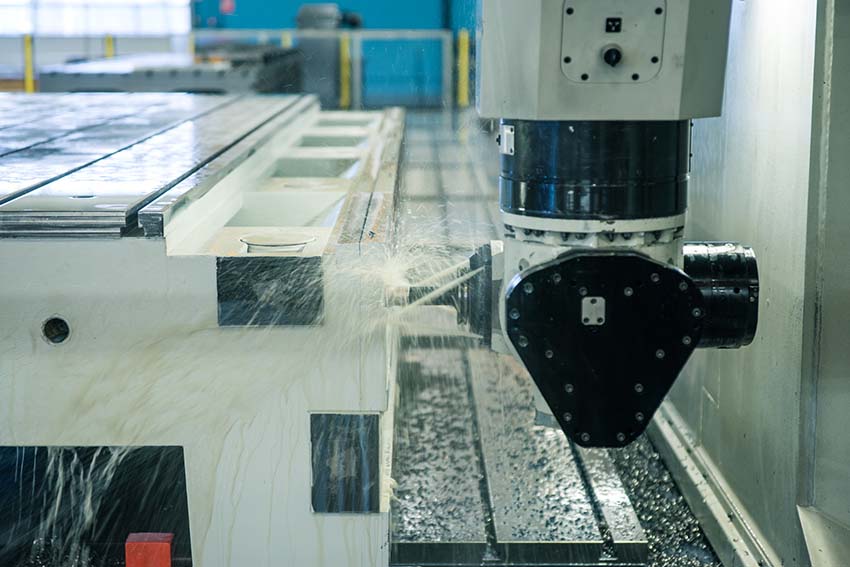Easy Engineering: Durcrete deals with Ultra-High-Performance Concrete or UHPC for short. What kind of material is this?
Durcrete: UHPC is a mineral cast, consisting of aggregates like sand and basalt and a cementitious, hydraulic binder, which bonds the grains together. Chemically it is the same as concrete for bridges, tunnels and buildings. Due to the innovations in concrete technology and admixtures, the compressive and flexural strength is five times higher than ordinary concrete.
E.E: What are the main applications in machinery business?
Durcrete: We deliver massive machine beds for tool machines to all big companies within Europe. They appreciate the good damping characteristics of the material for a faster milling and grinding speed of their machine with better quality. These clients order serial production with up to 200 pourings per year out of one mold. A further field of interest are individual designed and built testing frames for automotive. These clients appreciate the high Young´s modulus up to 80000 MPa to reach specific natural frequencies. All clients value the economic advantages and the simple design works.
E.E: Who are your main competitors?
Durcrete: Mainly we are in competition against cast iron and welded steel constructions. We substitute also parts made of epoxide-based polymer concrete and natural stone. Here we see significant advantages regarding the prices of the molds and the material costs, especially for big and heavy machine elements. We are steadily growing over the last years and have a production output of more than 1,000 elements per year.

E.E: Concrete is associated with fat men in yellow rubber boots in a gray sludge. How do you reach the precision required in the machinery industry?
Durcrete: A precision of 0.1mm can be reached directly out of the mold, without any precision works. This is a great economic advantage against welded steel construction in the automation sector. If a higher precision is required e.g. for tool machines, we can mill embedded steel plates or grind the concrete surface. We reach a precision of 5 microns over a length of 4500mm.
E.E: How are structural elements like linear guiding rails or even the enclosures are fixed?
Durcrete: We can mount threaded sleeves, transport anchors and every kind of steel part within the mold, so that they are closed within the concrete. Designed with anchors or undercut, these embedded parts are integral parts of the machine element which cannot be removed without destroying the complete element.
E.E: What research is done at Universities?
Durcrete: The RWTH University in Aachen has a research project dealing with the dynamic behavior and the fatigue of UHPC. The Technical University in Kaiserslautern has done some PHD-theses about material characteristics e.g. the thermal behavior and other theses about the analytical design of the fixing of linear guiding rails to the concrete surface.

E.E: Are you the only producer?
Durcrete: With a successful product, you are never alone on the market. We deliver not only ready-made machine elements onto the market. We also support the establishment of other production facilities with this new technology. So there exist a production plant in China, which is a daughter company of a tool machine producer named DEED. There are no license fees or special contracts necessary. The clients only have to do the invest for the concrete mixer, to order some consultancy and to buy the binder in Germany.
E.E: Are there other applications outside the machinery business?
Durcrete: The company DCS in Doha/Qatar produces façade elements for ambitious buildings in the construction business.
Durcrete GmbH
65549 Limburg, Germany
Dr.-Ing. Bernhard Sagmeister
Mail: info@durcrete.de

